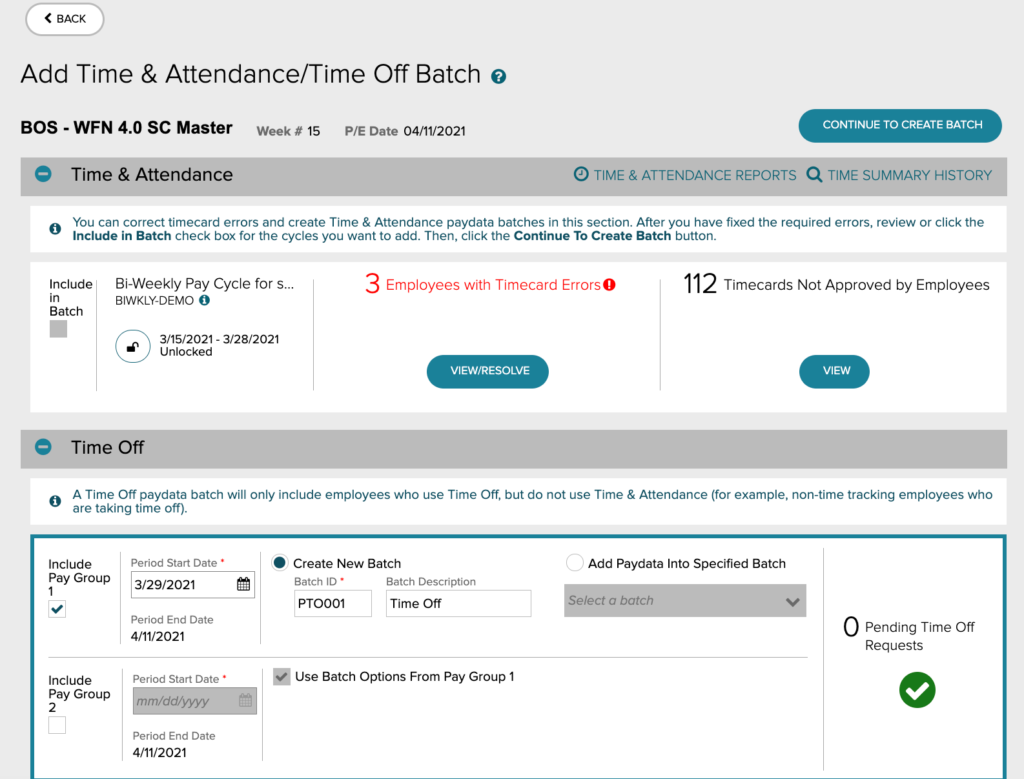Enhance Your Workflow with the ADP eTime API: A Comprehensive Guide

Table of Contents
The ADP eTime API is a powerful tool that can significantly enhance your time management processes. In today’s fast-paced world, effective time tracking and management are essential for businesses of all sizes. The ADP eTime API simplifies this by providing a seamless way to manage employee time and attendance data. By integrating this API into your operational workflow, you can streamline processes, reduce errors, and improve overall productivity.
In this blog post, we will explore everything you need to know about the ADP eTime API. We will break down its features, benefits, and practical applications in a user-friendly manner. Furthermore, we will provide step-by-step guidance on how to integrate the API into your existing systems.
What is the ADP eTime API?
The ADP eTime API is a part of the ADP workforce management solutions. It allows organizations to access and manage employee time and attendance data efficiently. This API provides a standardized way to interact with the ADP eTime platform, making it easier for companies to integrate time management into their existing software systems.
Additionally, the ADP eTime API offers various functionalities, including data retrieval, updates, and reporting. Organizations can use this API to automate time tracking, which reduces manual entry errors and saves valuable time. As a result, businesses can focus more on their core activities while ensuring accurate time management.
Features of the ADP eTime API
The features of the ADP eTime API are designed to enhance user experience and operational efficiency. One of the standout features is its ability to provide real-time access to employee time data. This means that managers can monitor attendance, hours worked, and other critical metrics instantly.
Moreover, the API supports robust reporting functionalities. Organizations can generate reports on employee time and attendance patterns, which can help identify trends and optimize workforce management strategies. By leveraging these features, businesses can make informed decisions based on accurate and timely data.
Benefits of Using the ADP eTime API
Integrating the ADP eTime API into your business operations comes with numerous benefits. First and foremost, it enhances accuracy in time tracking. Traditional time management methods often lead to errors, but the API minimizes these risks through automation.
Furthermore, the API saves time and resources. Manual processes can be time-consuming, and with the ADP eTime API, organizations can automate many of these tasks. This not only frees up time for employees but also allows them to focus on more strategic initiatives within the company.
How to Integrate the ADP eTime API
Integrating the ADP eTime API into your existing systems may seem daunting, but it can be straightforward with the right approach. Begin by reviewing the API documentation provided by ADP. This documentation includes essential information on authentication, endpoints, and data formats.
Once you understand the documentation, the next step is to set up a development environment. You can use programming languages such as Python or Java to connect to the API. By writing scripts that interact with the API, you can retrieve and manage time data seamlessly.
Step-by-Step Integration Process
- Get API Access: The first step is obtaining access to the ADP eTime API. You will need to create an account and request the necessary API keys.
- Review Documentation: Familiarize yourself with the API’s documentation. This will provide you with insights on how to authenticate and make requests.
- Set Up Development Environment: Choose a programming language and set up your development environment. Ensure you have the necessary tools installed.
- Write Code: Start writing code that connects to the API. Use the authentication keys to make requests and retrieve data.
- Test Your Integration: Before going live, thoroughly test your integration to ensure that it functions as expected. Look for any errors or issues that may arise.
- Monitor and Optimize: After the integration is complete, continuously monitor the API’s performance. Use the data retrieved to optimize your time management processes.
Common Challenges When Integrating the ADP eTime API
While integrating the ADP eTime API can be beneficial, it is not without its challenges. One common issue is authentication errors. These can occur if the API keys are incorrect or if there are permissions issues.
Additionally, data formatting can be a challenge. The API requires data to be in specific formats, and failing to adhere to these requirements can lead to errors. Therefore, it is crucial to pay attention to the documentation and ensure that your data matches the expected formats.
Best Practices for Using the ADP eTime API
To get the most out of the ADP eTime API, consider implementing some best practices. First, always keep your API keys secure. Sharing these keys can lead to unauthorized access, which can compromise your data.
Second, regularly review and update your integration. As ADP updates its API, staying informed about changes will help you maintain a smooth operation. This proactive approach can prevent issues down the line.
Training Your Team
Training your team on how to effectively use the ADP eTime API is another best practice. Ensure that employees understand how to access and interpret the data. This training can enhance productivity and ensure that everyone is on the same page regarding time management processes.
Moreover, consider creating a feedback loop. Encourage team members to share their experiences and any challenges they face while using the API. This feedback can be invaluable in improving processes and addressing any issues that arise.

Case Studies: Success Stories with the ADP eTime API
Numerous organizations have successfully integrated the ADP eTime API and reaped the rewards. For instance, a mid-sized manufacturing company reported a significant reduction in payroll errors after implementing the API. By automating time tracking, they minimized the need for manual entry, leading to more accurate payroll processing.
Another case study involves a retail chain that used the API to enhance employee scheduling. By analyzing attendance data, they optimized staff scheduling, resulting in improved customer service and reduced labor costs. These success stories illustrate the transformative potential of the ADP eTime API.
Measuring Success
To measure the success of your integration, establish key performance indicators (KPIs). These could include metrics such as error rates in payroll processing, time saved in reporting, and overall employee satisfaction with time management processes. By tracking these KPIs, you can gauge the effectiveness of the API in your organization.
Conclusion: Embracing the Future with the ADP eTime API
The ADP eTime API is more than just a tool; it’s a gateway to improved time management and operational efficiency. By embracing this technology, businesses can streamline their processes, reduce errors, and focus on what truly matters—growing their operations.
As you consider integrating the ADP eTime API into your systems, remember to follow the outlined best practices and continuously seek ways to optimize your use of the API. With dedication and the right approach, you can unlock the full potential of the ADP eTime API and transform your time management processes for the better.
FAQs About the ADP eTime API
What is the ADP eTime API?
The ADP eTime API is a powerful tool that allows businesses to integrate their time management systems with ADP’s payroll and HR solutions. It streamlines the process of tracking employee hours, simplifying payroll processing and improving overall efficiency.
How does the ADP eTime API work?
The API works by enabling communication between your existing systems and ADP’s services. It allows for real-time data exchange, ensuring that time records are accurate and up-to-date. This integration helps automate various processes, reducing the chances of errors.
What are the benefits of using the ADP eTime API?
Using the ADP eTime API offers several advantages, including improved accuracy in time tracking, reduced administrative workload, and enhanced reporting capabilities. Additionally, it provides a seamless experience for both employees and employers, making time management much easier.
Is the ADP eTime API easy to integrate?
Yes, the ADP eTime API is designed for ease of integration. It comes with detailed documentation and support resources to help developers implement it smoothly. Whether you’re a small business or a large enterprise, the integration process can be straightforward.
What programming languages can be used with the ADP eTime API?
The ADP eTime API is flexible and can be accessed using various programming languages, including Python, Java, and Ruby. This versatility allows developers to choose the language that best suits their existing systems.
Are there any costs associated with using the ADP eTime API?
While the API itself may not have a direct cost, businesses should consider potential fees associated with ADP services based on their specific service agreements. It’s essential to discuss these details with ADP representatives for accurate pricing information.
How secure is the ADP eTime API?
Security is a top priority for ADP. The eTime API utilizes advanced encryption and security protocols to protect sensitive employee data. Regular security updates and compliance with industry standards ensure that your information remains safe.
Can the ADP eTime API handle multiple locations?
Yes, the ADP eTime API is designed to manage time tracking for multiple locations or departments within a single organization. This feature is particularly beneficial for businesses with diverse operations, allowing for centralized time management.
What support is available for users of the ADP eTime API?
ADP offers comprehensive support for users of the eTime API. This includes documentation, online resources, and customer support teams ready to assist with any questions or technical issues you may encounter during integration or use.
How can I get started with the ADP eTime API?
To get started, visit the ADP website to sign up for the eTime API services. Review the available documentation, and consider reaching out to ADP’s support team for guidance on the integration process. Additionally, familiarize yourself with the API’s features to maximize its potential.
READ AlSO : The Incredible Rise of Ethan Page Furlong: A Journey Through Excellence




